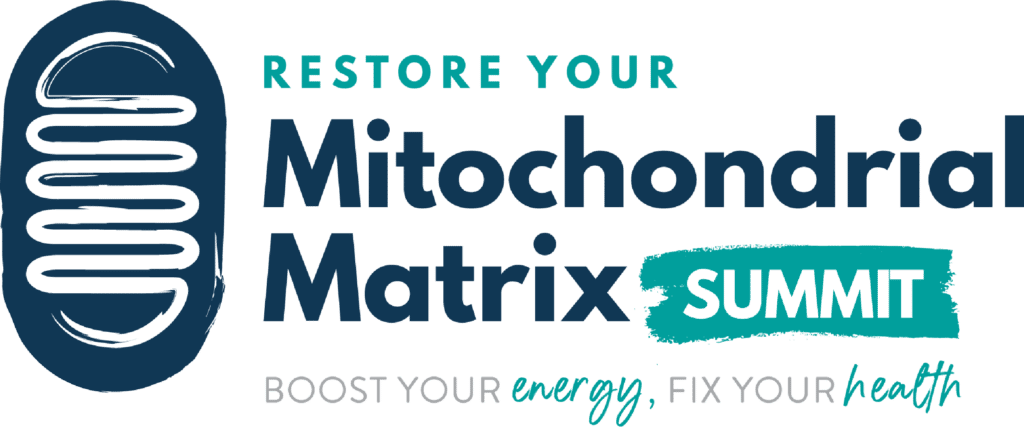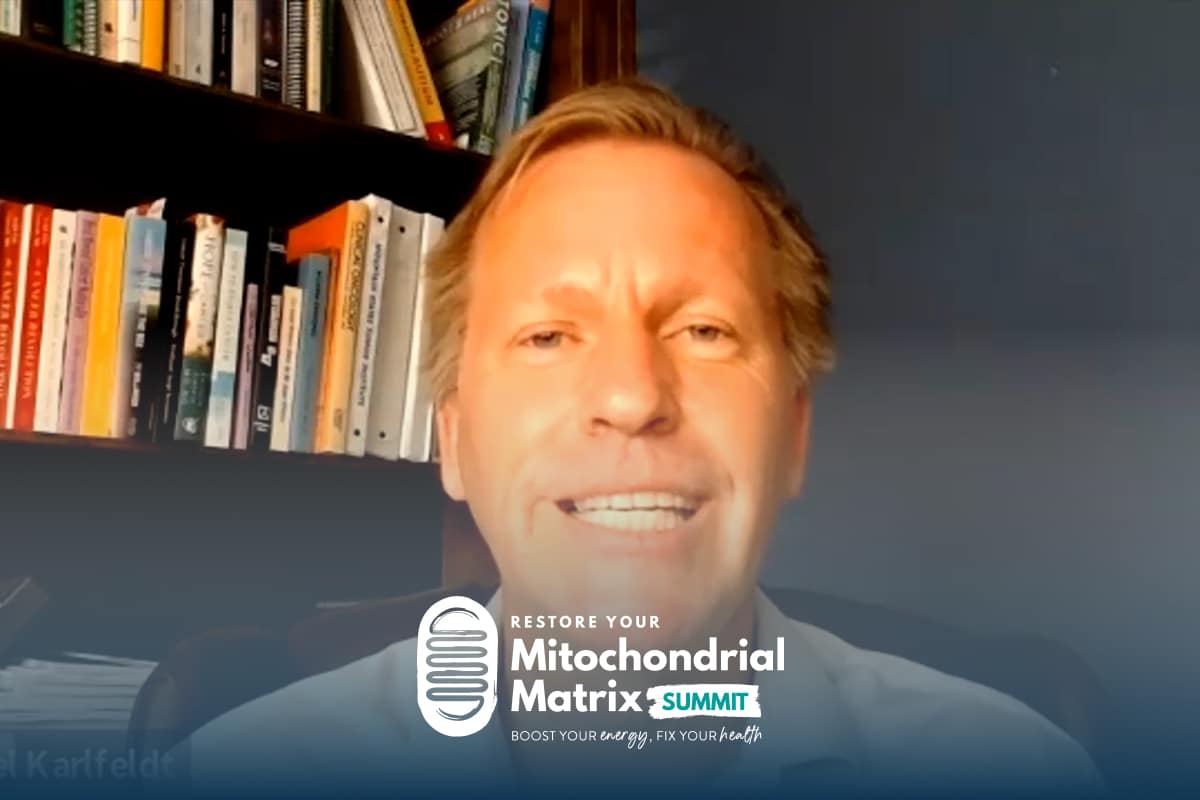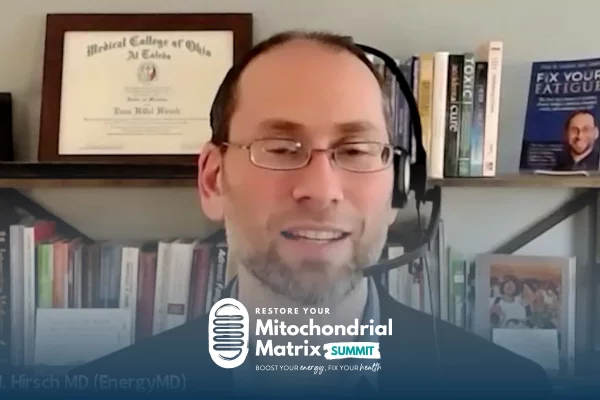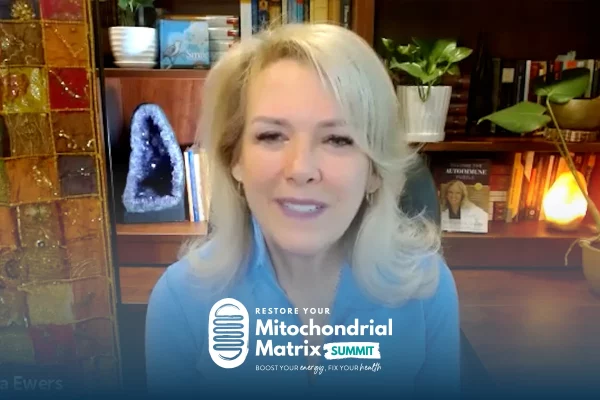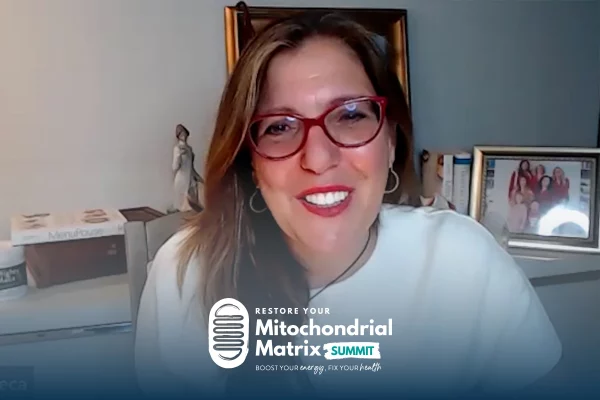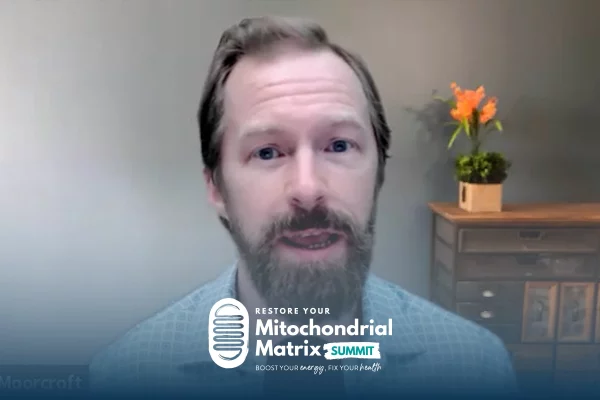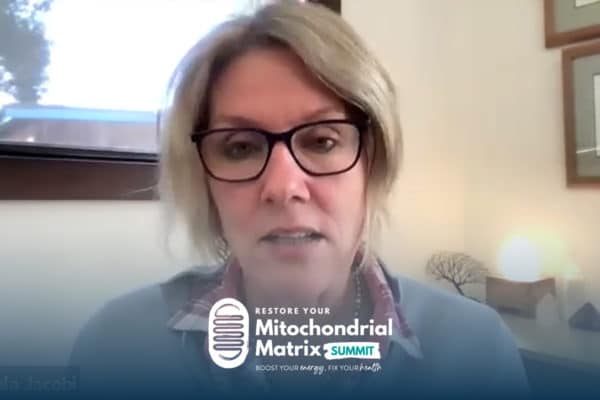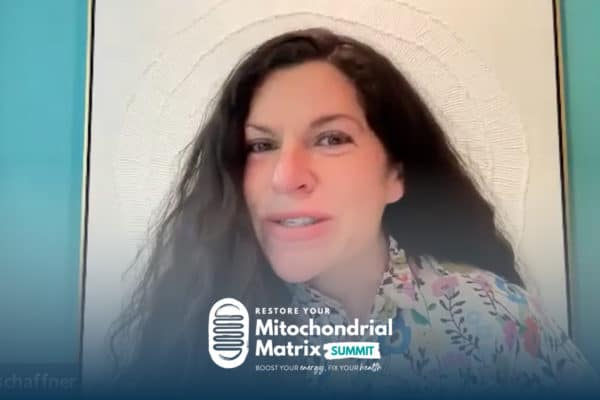Join the discussion below
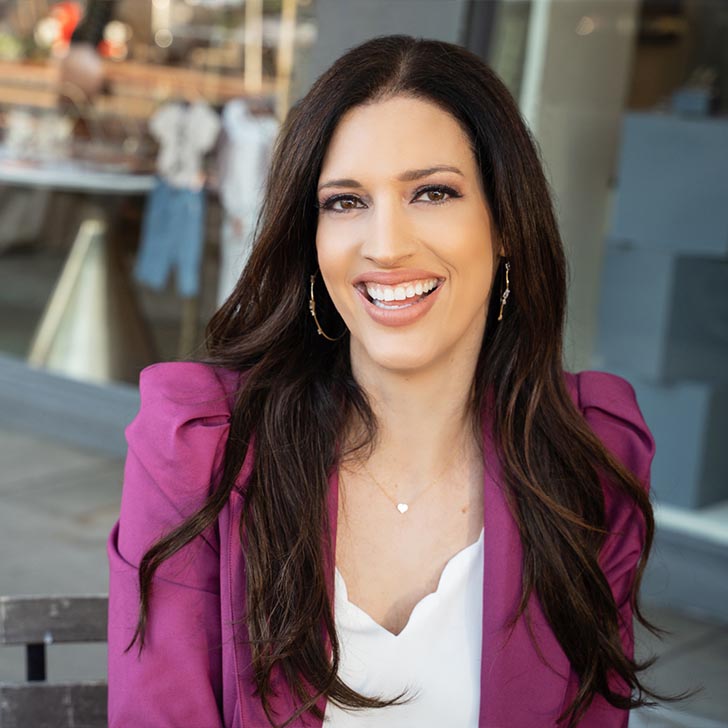
Laura Frontiero, FNP-BC, has served thousands of patients as a Nurse Practitioner over the last 22 years. Her work in the health industry marries both traditional and functional medicine. Laura’s wellness programs help her high-performing clients boost energy, renew mental focus, feel great in their bodies, and be productive again.... Read More

Michael Karlfeldt, ND, PhD, is a Board Certified Naturopath (CTN® ) with expertise in IV Therapy, Applied Psycho Neurobiology, Oxidative Medicine, Naturopathic Oncology, Neural Therapy, Sports Performance, Energy Medicine, Natural Medicine, Nutritional Therapies, Aromatherapy, Auriculotherapy, Reflexology, Autonomic Response Testing (ART) and Anti-Aging Medicine. Dr. Michael Karlfeldt is the host of... Read More
- Science of photodynamic therapy and impact on cancer cells and mitochondria
- The benefit of Oxygen/ Ozone in combination with photodynamic therapy
- Using platelet derived nanoparticles as a delivery system of therapeutics into cancer cells
- The key things to address if diagnosed with cancer
Related Topics
Body Regeneration, Cancer, Cancer Therapy, Chemical Exposures, Collaborative Care, Curcumin, Egcg, Emotional Issues, Fermented Wheat Germ Extract, Integrative Medicine, Integrative Oncology, Mitochondria, Nutritional Protocol, Photo-dynamic Therapy, Post-cancer Care, Regenerative Medicine, Standard Of Care, Survival Rates, Terrain, Traumas, Viral MoldLaura Frontiero, FNP-BC
Welcome back to another episode of the Restore Your Mitochondrial Matrix Summit. I’m your host, Laura Frontiero, and I’m bringing you experts to help you boost your energy and fix your health so you can build the life you love. And today I have a fun guest, Dr. Michael Karlfeldt. Hi, welcome to the summit.
Michael Karlfeldt, N.D., PhD
I’m so excited to be here, this is gonna be fun. It’s gonna be a fun topic and people are gonna love it.
Laura Frontiero, FNP-BC
It is gonna be fun, ’cause I even have some fun devices I’m willing to show everybody, I’m willing to put on the laser helmet.
Michael Karlfeldt, N.D., PhD
Actually, do you wanna do your Spaceball look, and then we’ll talk about it a little bit later on?
Laura Frontiero, FNP-BC
We got it. We got it.
Michael Karlfeldt, N.D., PhD
Yeah.
Laura Frontiero, FNP-BC
So this is the laser helmet and it’s helping my brain, and we’re gonna talk about this and what it does and why. So this is fun, I love devices. It’s kinda an adjunct to taking supplements and all the lifestyle things and everything else you can do. And we’re gonna get in deep about mitochondria today. You have an interesting specialty. You specialize in cancer therapy and regenerative medicine using photodynamic therapies and platelet-derived nanoparticles, so we’ll get into that. Tell you all about it and what that is, but first let’s introduce you to our audience. And I can’t believe we were talking before we started, I can’t believe you’re as old as you say you are.
Michael Karlfeldt, N.D., PhD
Well, thank you.
Laura Frontiero, FNP-BC
‘Cause we look same age. You’ve been in clinical practice since 1987, which is when I was in eighth grade. That’s crazy to me. You run a busy multidiscipline integrative medicine center in Boise, Idaho. Before that, for 20 years you were in Santa Monica. You were the host of the TV shows “Dr. Michael Show” and “True.Health: Body, Mind, Spirit” and the radio show “Health Made Radio.” And you have a couple of podcasts that are running right now, integrative cancer solutions and integrative lime solutions. And you told me you’re just about to start a third podcast. So you have a lot going on.
Michael Karlfeldt, N.D., PhD
We get bored easily, don’t we?
Laura Frontiero, FNP-BC
I guess, I guess, you’re super busy. But let’s jump in and talk about what this is all about. So Michael, can you tell us, I mean, you’re a cancer specialist amongst many things, but can you tell us how effective is standard care of cancer therapy in this day and age?
Michael Karlfeldt, N.D., PhD
It is sad. I mean, they’ve had billions and billions of dollars of research. They’ve been at it, obviously Nixon declared war more than 50 plus years ago against cancer, and thinking that now we’re gonna lick it and within all the money spent, we should have it all solved within a decade. And obviously we’re many, many decades after and we’re still not seeing a solution to this problem. And it’s a problem that’s just increasing more and more. We’re kinda getting to the point where almost one out of two are getting cancer and one out of four are gonna die from cancer, so.
Laura Frontiero, FNP-BC
But wait, you’re saying 50% of us are gonna get cancer?
Michael Karlfeldt, N.D., PhD
Yeah.
Laura Frontiero, FNP-BC
And a quarter of us are gonna die from it?
Michael Karlfeldt, N.D., PhD
Yeah.
Laura Frontiero, FNP-BC
That’s insane.
Michael Karlfeldt, N.D., PhD
Yeah, so it it’s obviously, this is something that we really need to solve and we’ve been going at it, they’ve been going at it, looking at it from focusing on the tissue and the issues with the cancer tissues, looking at the genetics of it. And with all the billions of dollars spent on it, they can increase, I think it’s about 3% that they’re able to improve the quality, not the quality of life, but the five year survival. So if you compare somebody that’s doing nothing to somebody that’s doing standard of care, 3% more are having a five year survival. So it’s.
Laura Frontiero, FNP-BC
Oh.
Michael Karlfeldt, N.D., PhD
Yeah and they-
Laura Frontiero, FNP-BC
That’s better, that’s barely better than doing nothing.
Michael Karlfeldt, N.D., PhD
It is barely better than doing nothing. And they’ve also done another study showing that it increases the life, I mean, if you add it all together and it increases the life about 2.4 months doing standard of care. So you can see that going through all the chemo, radiation surgery, all the suffering, losing hair, puking your guts out and all the things that come along with chemo, it’s, on average will add 2.4 months to your life. So it’s important that to kinda recognize the pros versus the cons doesn’t mean that you should not do standard of care. It has a place, but it’s not the only solution. So we need to bring in other tools and that’s where integrated oncology becomes so important.
Laura Frontiero, FNP-BC
Let me ask you this, are you, so I’m thinking about, I know people in my life who have had cancer and had that treated conventionally and gone on to live 10, 20, 30, more indefinitely, I mean, they’re still here. So are we talking terminal cancers, or is it all cancers that you’re referencing?
Michael Karlfeldt, N.D., PhD
All cancers.
Laura Frontiero, FNP-BC
Wow, so we need to lump it all together.
Michael Karlfeldt, N.D., PhD
Yeah, so it means that with those that were easier to treat, like breast cancers that maybe nothing would’ve happened, they could have lived with that lump the rest of their life. And so they are added into that statistic.
Laura Frontiero, FNP-BC
Wow. So you specialize in integrative cancer therapy. So what exactly does that mean if somebody has cancer and they’re looking for some other solution beyond what the Western world can offer, what does it mean?
Michael Karlfeldt, N.D., PhD
So, it means looking at not only standard care, but looking in combination with standard of care. And some people, some patients come to me and they don’t wanna have anything to do with standard of care, and obviously it is their choice. But frequently they come and they do some chemo, some surgery, some radiation. And then what we do on our side is that we look at what can we do to protect that person from the negative effect of the chemo, and then also keep the immune system as strong as possible while they’re going through that. And then also then maximize the effect of the chemo in addition to then bringing in other tools that have them and that oxidative cancer killing effect at the same time. So it’s marrying the two, more of the natural along with the standard of care, and then in that way then kinda maximizing the outcome for the patient. And it’s really powerful when you do that.
Laura Frontiero, FNP-BC
Yeah, so it sounds like you’re working in collaboration with the Western oncology model. And you talked about that kinda 3% being barely better than doing nothing. When you wrap in integrative care, what happens then? How does that percentage improve?
Michael Karlfeldt, N.D., PhD
Well, it was interesting. A good friend of mine, Dr. Paul Anderson that’s been at this for a long time. He’s kind of a leader in the field when it comes to integrative oncology. And he was doing some studies with National Institute of Health, this was way back when, I can’t remember when, when they still, when they thought that integrated medicine was gonna fail if we did a study, and he proved that he had, and they were, he was given like stage four, the worst of the worst failed cases. And they were able to produce a 50% five year survival.
Laura Frontiero, FNP-BC
Wow.
Michael Karlfeldt, N.D., PhD
So that’s huge.
Laura Frontiero, FNP-BC
Yeah, that’s fair.
Michael Karlfeldt, N.D., PhD
And these were the failed ones that were gonna die that the doctors say, well grab this patient ’cause they’re gonna die anyway.
Laura Frontiero, FNP-BC
That’s really impressive. Do you work with people only locally or do you work with people virtually? Or do people have to be in the Boise area to see you?
Michael Karlfeldt, N.D., PhD
Yeah, no, they fly from a little bit, all over the place.
Laura Frontiero, FNP-BC
That’s amazing.
Michael Karlfeldt, N.D., PhD
So yeah, usually we have a Zoom visit or phone visit and put ’em on a protocol, the nutritional protocol, I learn about what type of cancer they have and what kind of background, we do labs to see what are some of the drivers that are underlying factors? Are we dealing with chemical exposures, are we dealing with emotional issues, traumas? So we’re dealing with viral mold, looking at all these different things, their nutritional levels and their level of immune system. And then putting together then a protocol. And that’s what’s amazing is that it’s really evolved, these natural substances like curcumin, EGCG and fermented wheat germ extract. And you can bring in these tools depending on the individual, what they’re dealing with and really change the terrain within the person so that they can more effectively battle the cancer.
Laura Frontiero, FNP-BC
Oh, that’s incredible. Now what if there’s people listening who have already been through conventional cancer treatments, let’s say they’re a few years out, but they know their body isn’t where it was before they took all those treatments. Do you work with those groups of people as well, who want to regenerate their bodies after cancer care?
Michael Karlfeldt, N.D., PhD
And that’s a side, it’s a whole spectrum. So yeah, I have the individuals that they wanna prevent. And obviously, I love prevention more than anything. They recognize my mother died from cancer, and I really want to be at a place where I feel stronger, my immune has been stronger. And can I make sure that I detoxify and clear out whatever elements that may push me in the direction of cancer, or people that are just diagnosed and they wanna see what combination do I wanna do? Do I wanna just go all holistic? Do I want to bring in the medical oncology as well? How do I want to do it? So I see those patients, I see the patients that have started medical oncology and they are recognizing they’re not getting the solutions they’re wanting. Maybe they’re on their second round of chemo and they’re not responding, and they need to do something different ’cause they’ve kinda run out of options. Or, like you’re saying, you have the people that are, they’ve gone through all these therapies, and now they are on the other side, they are in a remission, but their immune system is beaten up, their gut is beaten up, and the tissue as a whole, they might be dealing with brain fog.
Laura Frontiero, FNP-BC
Yeah.
Michael Karlfeldt, N.D., PhD
Neuropathy, all these different things that comes along with traditional oncology therapies. And then we can then work on restoring these things. One of the issues, and I have a little free ebook that everyone can get for free, is they’re kind of 11 things that I really want to make sure that people address. And one of those 11 things include the cancer stem cells. And the issue with cancer stem cells is that they are the ones that are driving the metastasis and they are the ones that really kinda lurk there in the background. And they can pop up a number of years after being remission free. So it is really important to have therapies that will address these cancer stem cells. And what’s interesting with, or scary, with traditional treatments like chemo radiation is that they activate the cancer stem cells. So they actually become more active and you are more at risk of recurrence after having gone through that, in addition to obviously that will kinda beat on the immune systems, your immune system will be all beaten up, and then you have these cancer stem cells that are more aggravated and ready to go. So it’s important then to bring in some of the therapies that I offer in order to be able to calm them down, reduce inflammation and support the tissue.
Laura Frontiero, FNP-BC
Oh, for sure. We’ll make sure that that guide with those 11 things to address for cancer is located on somewhere around this video when you find this, or on your speaker page. So can you talk about some of this stuff, what is photodynamic therapy? This is one of the things that you specialize in.
Michael Karlfeldt, N.D., PhD
Yeah, yeah. Which it’s one of these kinda new and up and coming type of therapy. So it’s is a little bit more cutting edge and aren’t that many in United States that do it. And I work along with practitioners both in Europe and then in Mexico, so that we can keep developing protocols and become better and better at what we’re doing. And in reality, what photodynamic therapy means is that we’re then able to target the cancer cells directly, and it’s done in a safe manner without injuring tissue that is healthy. And you combine then a photosensitizer, and a photosensitizer is just a chemical agent that you introduce, you can introduce that intravenously or orally, and that has an affinity to cancer cells. And the reason why they end up in the cancer cells is because of the vascularity around the tumor is very disorganized and very leaky. So these photosensitizers start to accumulate then over time in these tumors in these cancer cells.
And so the photosensitizer, as it accumulates there, you can then use then a laser both intravenously, which we do at our center, or you can do it externally, or you can even do it with a little optic needle, getting close to the tumor and you can then blast those cancer cells with the light. And now with the photosensitizer already being in there and the photosensitizer will then increase the amount of light that gets into that cancer cell. And that will then create an oxidated burst within the cancer cell and literally then killing those cancer cells. So it’s a really cool new therapy that has a huge amount of implications. And so, yeah, the key is then to match the laser wavelength with the appropriate photosensitizer and making sure that the photo, enough of the photosensitizer, gets into the tumor area. So it is really, really cool that new therapy.
Laura Frontiero, FNP-BC
How many treatments do people need?
Michael Karlfeldt, N.D., PhD
So we have like a two week intensive where they come and they get the photosensitizer in the beginning of the two weeks. And then we treat them every day with the laser light both intravenously and externally. And so that’s about 10 therapies. And we’ve had patients that just within that time have seen great reduction, but you want to obviously follow up ’cause you wanna kind of put pressure on the tumor. So it depends a little bit from person to person, and usually I want them to come back then after a month and we do a kind of touch up for a few days and do that once a month for a few months, just to kinda keep putting pressure on the cancer.
Laura Frontiero, FNP-BC
Wow. Oh, this is remarkable. Now you also mentioned that you sometimes use oxygen or ozone in combination with the photodynamic therapy. Talk a little bit about that.
Michael Karlfeldt, N.D., PhD
Yeah, so one of the issues with like chemo and radiation is that it is an oxidative therapy, meaning that you are oxidizing, you’re killing the cancer cells oxidizing them. But the key is to have oxygen within the cancer cells in order to be able to do that. And we know that tumors is a very oxygen poor environment, and that’s why a lot of times a chemo radiation has a hard time then to oxidize because it is very oxygen poor. So if we combine an oxidative therapy like chemo radiation with something like hyperbaric oxygen therapy or another therapy that will then increase the amount of oxygen within the tumor environment, you are able to be much more effective oxidizing then those cancer cells.
So the photodynamic therapy just like chemo radiation is also an oxidative therapy. So you need then in order to be able to trigger that production of reactive oxygen species, or these kind of oxygen bursts, oxidative bursts within the cancer cells, you need to have then oxygen there. And that’s where things like hyperbaric oxygen therapy comes in. Intravenous ozone, we have another machine called Hocatt or we do these therapies where people, it’s called EBOO or RHP where literally, you’re cleaning the person’s blood using ozone. So, blood comes out from one arm into a machine that ozonates it and then goes back into the other arm, and that you kind of maximize the amount of oxygen within the tissue. So all these therapies and come along with that photodynamic therapy. So those are kinda the main key components is you have the photosensitizer, you have an oxygen source, and you have a laser that will trigger the oxidative burst. So that’s a key component, so three.
Laura Frontiero, FNP-BC
And this is the perfect time to bring in mitochondria, ’cause you’re talking about reactive oxygen species, you’re talking about oxygenation. So all those mitochondria that are around these cancer cells, they’re getting blasted too with laser, they’re getting blasted with oxygen, all of it. So bring that in and share with us what’s happening with mitochondria. Why is this important to even talk about?
Michael Karlfeldt, N.D., PhD
So what what’s interesting with cancer is that we’ve been looking at it, and that’s why we’ve had so little success with cancer, has been looking at it genetically all along. And that is important, all these onco genes and kinda looking at what are the dysfunctions? The issue is that not every cancer cell is the same. And within the same tumor, one cancer cell may express certain cancer drivers, anther may do another one. And so genetically it may be different. But what we are seeing the similarity between, with the majority of them is their metabolic dysfunction. and that is a dysfunctional mitochondria. And so the, because of the mitochondria being dysfunctional, it will, the cancer shifts into like a survival mechanism or survival mode that bypasses the mitochondria. So the key then to prevent cancer is obviously then to maximize healthy cells’ mitochondria and supporting them in the best possible way.
And that’s where you bring in things like obviously oxygen, you need oxygen. So the healthy cells, they do very well with the oxygen. And then also with the laser light, you have the oxygen and you bring in the laser with the different colors, they actually drive the energy production within the cell, within the mitochondria. So you have these stations, it was called electron transport chain, and within that you have different stations in a complex, 1, 2, 3, 4, 5. And the different colors in the laser that we do intravenously, they will hit and activate these different stations within that transport chain that produces energy that produces ATP. So the healthy cells actually get stronger and we’re activating the mitochondria while then the cancer cells is having a harder time because the mitochondria’s dysfunctional. And when you’re pushing their mitochondria, there are few things that happen, either, ’cause the mitochondria also the one that controls the cell death switch of the tumor.
So which means that it will, if the cell is too dysfunctional, the mitochondria is the one that says we’re done, peace out and flips the switch and the cell self destructs. Or the mitochondria can then choose, if it’s just a little dysfunctional, it can then choose to then repair the cell. So working on the mitochondria, and putting stress on the cancer cells’ mitochondria, and it can’t repair, but you activate it, the mitochondria says, well, this is a cell that shouldn’t be here, it’s completely dysfunctional. So it’ll flip the switch, cancer cell would die. Meanwhile, you do the same thing on a healthy cell and that cell just regenerates, gets stronger, and you have that anti-aging effect. So that way you get the best of both worlds at the same time with this kinda therapy compared to chemo, which just destroys everything.
Laura Frontiero, FNP-BC
So this is, I wanna unpack a couple things you just said, ’cause you just said a lot of stuff. So first thing I heard, well, the last thing I heard and then we’ll go to the first thing I heard. The last thing I heard was those cancer cells have mitochondria as well. And those mitochondria are deciding, kill the cell or repair the cell. And so everything you’re learning, everything that you viewers are learning from all these speakers on this Mitochondria Summit to support your mitochondria health, the reason this is important, you said it at the beginning when I asked that last question is basically if your mitochondria aren’t working well, you are at higher risk for cancer. And you said at the beginning of this talk that one in two people are going to have cancer. And this, as you said that, I was like, okay, my work is done. I’m just gonna shut off the camera and leave now because you just nailed exactly why I created this summit to begin with, because the foundation of everything with our health comes down to mitochondria. And if you aren’t supporting mitochondria, all the things you can do to be healthy don’t mean anything if you have mitochondria dysfunction. I literally have people on this summit who say I wanna call my talk “How Not to Die.”
Michael Karlfeldt, N.D., PhD
And literally, that’s what it is. I mean, we’re looking at the, obviously supporting the mitochondria and we all want better energy. We all want anti-aging and all these are great things, but at the end of the day, the mitochondria, if that is dysfunctional, we’re not able to detoxify appropriately within the cell. And so now we have the accumulation of these acidic, toxic substances that accumulate in the cell, putting stress on your genetic material, and it’s perverting the way that you produce protein, how they fold and which will be then all of a sudden your knee joints aren’t as good, your liver’s not as good, kidneys, I mean, all these tissues are not gonna be healthy. And then if we take it to the next step, then the cell is saying, well, the mitochondria is completely done, so now we gotta move into another phase and we’re gonna start to ferment glucose. And we do this fermentation cycle and bypass the mitochondria, and now I’m a cancer cell. So you’re absolutely right.
Laura Frontiero, FNP-BC
Oh, so did you just say sugar feeds cancer?
Michael Karlfeldt, N.D., PhD
Yes. And you know what they, what cancer patients get when they get treatment? They get Ensure. And what is Ensure? It’s just sugar. And yeah.
Laura Frontiero, FNP-BC
Don’t even get me started on Ensure. That was actually a huge battle in my family. My grandma died earlier this year, a few months ago, and she did not have cancer, but she had achalasia, and she no longer could swallow solid food. No matter how much she chewed it, it just got stuck. She was on liquids for the most part, and Ensure was the thing that she kept going to. And no matter what we said to her, no matter what we taught her, no matter how much we tried to get it out of her hands, because her doctor told her to drink it and because the staff at the assisted living facility where she was at endorsed it, she would not do something better, we tried everything. We brought in healthy protein smoothies, and homemade. And it just, it’s, I just, sorry, I have to go down that rabbit hole right now. It’s dear to my heart. We just literally watched her waste away. And we just knew it was killing her. I mean, it’s ultimately not what killed her, but she did die of malnutrition.
Michael Karlfeldt, N.D., PhD
It is so sad, because people don’t, medically they think all you need is sugar and some protein and that’s pretty much it, I think, I mean, they really don’t do much more.
Laura Frontiero, FNP-BC
Yeah.
Michael Karlfeldt, N.D., PhD
And all these other things really doesn’t have any value whatsoever, like vitamins and minerals and all that is nice, but they really don’t put any value in it. So now you have a person drinking Ensure, but the body has not evolved in a way to be able to process refined sugar. It needs all these B vitamins, and chromium and manganese and magnesium, and needs all these other nutrients in order to be able to process that refined sugar. And where are all those nutrients gonna come from? Well, they’re coming from the body. And so now you’re complete, yeah, continually leaching all these vital nutrients out of the individual, as they’re sipping on that chocolate flavored Ensure.
Laura Frontiero, FNP-BC
Yeah, and that’s not even to mention the artificial flavors that are in it, the artificial colors, the preservatives, the seed oils and the vegetable oils that are in it. I mean, it’s literally the worst thing you could possibly put in your body. Unbelievable, but that’s a whole nother talk.
Michael Karlfeldt, N.D., PhD
Well, actually, I mean, let’s talk about the seed oil. The inflammatory effects. So talking about the mitochondria cell wall membrane, mitochondrial cell wall membrane, that is a lipid membrane. And by drinking that garbage fatty substances, those rancid trans fats all that, it is creating, making that so inflamed so that no nutrients can enter into that membrane. So keeping those membranes healthy is like key, key. And none of that is thought about medically. And so we as consumers, or we as integrative doctors, we have to continue to be aware of that and recognize that medical doctors don’t have a degree in nutrition, they have no clue about nutrition. And just because they say there are no studies out there, it just means that, it doesn’t mean that it’s not good, it just means that nobody studied it.
Laura Frontiero, FNP-BC
There’s no money in studying it. There’s no money in doing a study on healthy food.
Michael Karlfeldt, N.D., PhD
No, yeah.
Laura Frontiero, FNP-BC
Who’s gonna pay for that?
Michael Karlfeldt, N.D., PhD
Yeah, exactly. It costs hundreds of millions of dollars to bring drugs to the market. So who’s gonna pay studying curcumin, or studying, the only studies that were done for that is the pharmaceutical companies that are trying to isolate components within natural agents to see if they can make drugs out of it. And those are the studies that exist. And there are a lot of those studies as well.
Laura Frontiero, FNP-BC
Yeah, yeah. Well, can we talk about this fun device that I have here?
Michael Karlfeldt, N.D., PhD
Yeah.
Laura Frontiero, FNP-BC
Why we put it on my head at the beginning of this talk, and why I’m doing this and what this is for?
Michael Karlfeldt, N.D., PhD
So this is an example of photodynamic therapy, or if you do, so photodynamic is more kinda destructive. So let’s say, it looks really good on you, by the way.
Laura Frontiero, FNP-BC
Yes, I know my-
Michael Karlfeldt, N.D., PhD
Yeah, exactly.
Laura Frontiero, FNP-BC
My husband makes fun of me when I put it on.
Michael Karlfeldt, N.D., PhD
So you have two versions when you use light therapies. You have the photobiomodulation, and that is for regenerative reasons. And then you have photodynamic therapy and that is for destructive reasons. So meaning if you want to kill cancer cells, you want to kill bacteria, you’ll want to kill viruses, fungus, then use photodynamic therapy where you combine a photosensitizer with the corresponding light. Photosensitizer attaches itself to the cancer cells or attaches out to the bacteria or the virus, and then use the laser to blast it off, to kill it. That device is fantastic for regeneration. So that device has both red and infrared within it, I think actually it’s mostly infrared in it. And what that does, the infrared has this deep penetration and is for tissue regeneration and for increased circulation, and also for immune cells to be activated and also kinda clean up any pathogens in that environment.
So when you put that little device on, that is called photobiomodulation, where you modulate healthy tissue using light, and they’ve had seen great results with that for things like Parkinson’s or MS or ALS, using that. In fact, there’s a gentleman that I interviewed on my radio show, that’s no longer running, but you can find on my website, Michael Hamlin, he’s one of the leaders when it comes to studying photobiomodulation, photodynamic therapy, and it’s just incredible what you can do and what they’ve seen just using that. And for people dealing with post-COVID, you can really do that to increase the circulation, reduce inflammation, the blood vessels, and then also turn on energy production in the mitochondria in your brain. And we know about 30% of all your energy is produced in your brain. So you really wanna make sure you turn the mitochondria on for being able to focus and prevent dementia and Alzheimer’s and all those kind of things.
Laura Frontiero, FNP-BC
Yep. And that’s why I’m taking it. I had COVID about 10 months ago and I’m, almost 11 months ago actually, and just my brain isn’t what it was prior. And so I’m constantly on this quest to bring my brain power back to its excellent functioning. And if I can get it even better than it used to be, that would be amazing.
Michael Karlfeldt, N.D., PhD
And you can combine that with like methylene blue is a great combination. Methylene blue is fantastic to turn on the mitochondria as well. And it also blocks the ACE2 receptors, where these little mRNA, the COVID locks into. So the methylene blue helps to block that, and then also really turns on the mitochondria.
Laura Frontiero, FNP-BC
And then when I’m using this helmet, there’s some particular supplements I have to take. Will you explain that?
Michael Karlfeldt, N.D., PhD
Yeah, so you, methylene blue is one that you can do. Also chlorophyll, so that’s kinda matching the red light to maximize the effect of it turning on the mitochondria, because you have, and you look, when you look at the spectrum, you wanna match the kinda opposite color with the light, meaning you have the red and then you wanna do something that’s green. Yeah, so, and for, yeah. So the methylene blue, believe it or not, it does look blue, but it actually matches. If you take it and you see what’s coming out of urine, it’s all green. So it does match and with red light very well. And then you have curcumin, that one tends to match and which is more kinda yellow. It matches them with blue light, so then you take curcumin before you do any light that has blue, that one being red or infrared, then you do chlorella, which is very green. Yeah, so anything green will help with that.
Laura Frontiero, FNP-BC
And what’s the sweet spot? How much time should you, how long before you do the treatment with the helmet or the red light therapy should you take the chlorella?
Michael Karlfeldt, N.D., PhD
So you, the chlorophyll.
Laura Frontiero, FNP-BC
Chlorophyll, excuse me.
Michael Karlfeldt, N.D., PhD
Yeah, and we can talk a little bit about chlorella as well, but the chlorophyll, about 30 minutes and same with methylene blue, it’s about 30 minutes, and then it starts to be out in the bloodstream.
Laura Frontiero, FNP-BC
Yep.
Michael Karlfeldt, N.D., PhD
And then you do the treatment.
Laura Frontiero, FNP-BC
So fascinating, I keep wanting to call it chlorella, so talk about chlorella.
Michael Karlfeldt, N.D., PhD
Well, I mean, so anytime you turn on the mitochondria or which is what you’re gonna do with that helmet, or if you do it intravenously like we do at our center, you are then going to, that energy’s gonna be used for something. And so that can either be to clear out aggravating factors or to heal tissue and to strengthen tissue. So aggravating factors would be, we’re in a sea of chemicals and heavy metals, so when the system gets more energy, then it will start to clean out closets. So it’ll wanna do like a spring cleaning. And so that means that now all of a sudden, we’re opening doors and we’re shuttling heavy metals or chemicals out of the cells and enters into the bloodstream, ’cause the body wants to get rid of it. So that is really good to bring in what’s called a binder, something that will bind to these heavy metals and chemicals. Chlorella is a fantastic one to do that. There are a number of other binders as well, but I love chlorella, I use that. I kinda make a dose on it when I do these kind of therapies to really kinda capture all these heavy metals that you’re kinda moving out of the system.
Laura Frontiero, FNP-BC
So good, so good. Okay, one more thing I wanna talk about before we ran out of time. I wanna talk about using platelet-derived nanoparticles in your therapeutics.
Michael Karlfeldt, N.D., PhD
So what’s cool with that is that you, with no tissue that’s suffering, there’s an inflammatory process that’s going on right there. So like for instance, if you have a joint, you have arthritis, that inflammation is there to signal the immune system to get to that location to heal it. But chronic inflammation means that you have not been able to completely solve that issue. The signal is not strong enough for the immune system to complete their job. So with a platelet-derived nanoparticles, and what that is is that we are using, we’re packaging substances within a platelet membrane coating. And the platelets have a high affinity to any area that is inflamed. So you can then, and there’s a certain process that we use at our center to be able to load these platelets with these different substances, like curcumin or like a peptide, for instance.
Or if we want to use a photosensitizer dealing with cancer, ’cause cancer is a very, the cancer micro environment is very inflammatory. So then you can load these platelet membranes with these substances and they are then strongly attracted to the area of inflammation and then offload whatever that’s in there. So for instance if we would load it with curcumin, we would then be able to get the curcumin to the areas of inflammation much faster, much more effectively. So it’s a really cool new way of maximizing a delivery system to make sure that it gets to the right location at the strongest possible dose.
Laura Frontiero, FNP-BC
I think all of this is giving our viewers and listeners hope right now. There is more out there to support them, their loved ones. As we wrap up here, can you go over some important things to consider when you’re diagnosed with cancer?
Michael Karlfeldt, N.D., PhD
Yeah, and that’s the thing, is that when patients get that diagnosis, it becomes really overwhelming and all of a sudden they have an oncologist saying, well, we gotta get you in quickly. We gotta, these are the things that we gotta do. Gotta start chemo right now, or maybe we need to shrink it a little bit first with some radiation, then do chemo or surgery, whatever it may be. But it becomes all of a sudden they are just, yeah, they get blindsided and it becomes overwhelming. So I want to then break down different things that’s really important to understand. And I have that in the ebook, so it’s a little bit more explained there and I’m actually gonna have a webinar series where I have leaders in the world that will discuss each one of these 11 aspects. Like Dr. Paul Anderson talking about the mitochondria or Dr. Nasha Winters talking about root causes. So the, it is important to understand that the cancer didn’t just show up because, there’s always a reason behind it. So you wanna look for root causes.
Why did it show up? Because if you just go after the cancer, blast the cancer with chemo and you don’t address the root causes, guess what? The root causes are still there and you’re still gonna produce cancer. And you do want to then address the cancer stem cells that I mentioned because if you don’t, they just get angry if you blast it with chemo and then they get activated and then they set up shop somewhere else. and all of a sudden you have much more aggressive and chemo resistant type of cancer. You wanna address immune system, you wanna address, make sure that you detoxify appropriately, you wanna address your diet, your mindset, you wanna exercise. So these are things that are really important to be able to think about when you’re developing a strategy with, and when you’re dealing with cancer. So, yeah. And that becomes the foundation so that you don’t miss out on these powerful therapies. Like for instance, exercise, it increased survival by 30%. I mean, 30%. Can you imagine a therapy that, or a pill? I mean, you would take that and it would increase your likelihood of survival by 30%? I mean, pharma would be rich.
Laura Frontiero, FNP-BC
Yeah.
Michael Karlfeldt, N.D., PhD
But I mean they’re rich already, but they would actually be effective.
Laura Frontiero, FNP-BC
Our priorities are a little screwed up if we’re not willing to go exercise, if it gives that much of a benefit to our healing and our longevity.
Michael Karlfeldt, N.D., PhD
Yeah, so yeah, these are things that I really want people to consider. It’s free to kind of, ebook is free. And if you sign up to my website, we’ll send these emails out free with all these interviews that I’ve done. And yeah, it’s really powerful and important information, especially considering 50% of us are gonna get cancer.
Laura Frontiero, FNP-BC
That’s unreal. Well, with that, I’m gonna take us out with my helmet on, okay?
Michael Karlfeldt, N.D., PhD
Beam me up, Scotty, is that what you’re doing?
Laura Frontiero, FNP-BC
Yep, yep. If you’ve ever seen the movie Spaceballs, then you know there’s lots of jokes when I’m wearing this helmet. My family gets a kick out of it, but I love it. I’m already feeling my brain much sharper over the last week.
Michael Karlfeldt, N.D., PhD
You look like Dan Aykroyd with this.
Laura Frontiero, FNP-BC
Well, thank you so much for sharing your wisdom and all that you do here. I think that people are gonna wanna work with you, they’re gonna want to learn more about your process. So share with us where we can find you, where can our viewers get more of you?
Michael Karlfeldt, N.D., PhD
I mean, the best is just go to my website. It’s thekarlfeldtcenter.com. And Karlfeldt is just my last name. Yeah, and hopefully it’ll be here part of the interview so you can see what it is. But just go there and just give us a call. You can either email us, message us, call us. And we have amazing patient advocates that will communicate with you and kinda set everything up, and then I can chat with you. I offer 15 minute free consult for if people wanna just kinda see is this for me, and then I’m happy to get on the phone and chat a little bit for 15 minutes, just.
Laura Frontiero, FNP-BC
Wow. I can’t believe you have time to offer that, that’s incredible.
Michael Karlfeldt, N.D., PhD
I really don’t, but I, cancer is so dear to my heart. ‘Cause my dad passed away from cancer and it’s just one of those that touches so many of us. And so I really, really wanna make time, and I always figure out, even if it’s lunch hour, after hours, before hours, I wanna make sure I make time to take care of the patients that need it.
Laura Frontiero, FNP-BC
Thank you so much for all you do. You literally are so inspiring.
Michael Karlfeldt, N.D., PhD
Oh, thank you. Thank you for what you’re doing. And thank you for really putting together this awesome summit addressing such a key component. I mean that that’s like the hub of health is right there.
Laura Frontiero, FNP-BC
Yeah. You take good care now until next time.
Michael Karlfeldt, N.D., PhD
Great. Thanks so much.
Downloads
